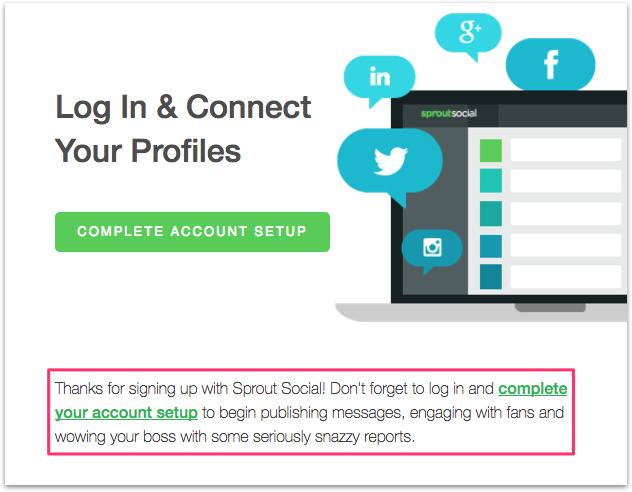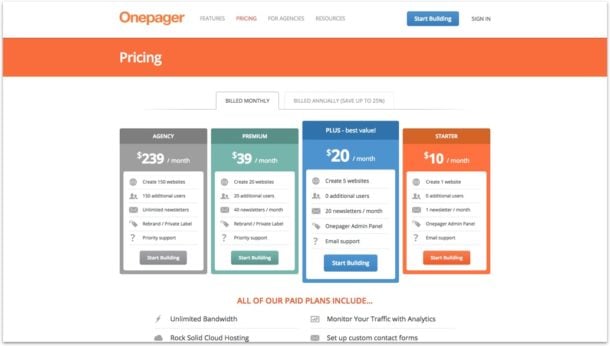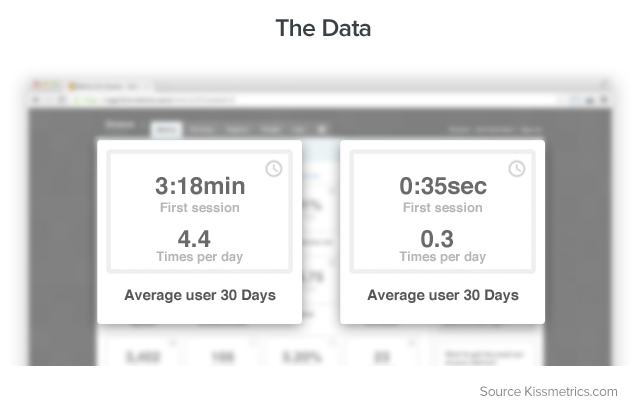Like most SaaS managers, you are committed to running and growing your business. To achieve this goal, you need to ensure that you are meeting the needs of the consumer and mitigating churn.
Customer acquisition is expensive. Some companies spend anywhere between 5-25 times more to acquire customers than to maintain the existing ones. Reducing churn should be a top priority for any SaaS manager.
Below are some battle-tested tips that will help you mitigate churn:
1. Make Customers “Sticky”
There is a direct link between product engagement and churn. The more customers interact with your software, the less likely they are to cancel a subscription or uninstall it.
According to John Warrillow, author of The Automatic Customer, The biggest competitor for your subscription business is not a rival service but your customer’s inertia in not using your service.
Your objective is to invite subscribers to interact with your software or service as frequently as possible. In other words, make the customer sticky to your product.
According to the Havard Business Review, a sticky customer is one who is likely to follow through on purchases, buy the product frequently, and recommend it to others.
SaaS companies like Zapier, remind their customers of the benefits of their products when invoicing to clients.

Zapier understands how risky invoicing is. An invoice to an inactive user can trigger a cancellation. So, to maximize the opportunity and reinforce value, Zapier reiterates the benefits of its’s products.
2. Watch the 90-Day Onboarding Clock
In an analysis across different industries, Localytics discovered that the average mobile app retention rate was about 20% after the first 90 days.

Over 80% of app users on mobile devices are likely to churn within the first three months of launching the app.
One of the most significant contributing factors to this phenomenon is poor onboarding. If new users are not guided on what they are supposed to do to achieve success, they are more likely to abandon the app.
let’s take an example from Sprout Social:
Before the beginning of your free trial, you need to log in and connect to Sprout Social’s social media accounts. If you choose to skip, you will get this email.

Sprout social understand the importance of reducing friction at a critical stage of onboarding. Your onboarding process needs to overcome objections, manage expectations, and explain how to use your products/services while highlighting your brand’s uniqueness.
Magoosh added a welcome email. This move increased signups by 17%. Below is the email in their onboarding flow:

To get your customers to integrate your software into their daily lives, provide easy and quick wins when onboarding. Prise the customers for their efforts.
3. Charge Upfront
Below are pricing pages from OnePager:
Which option feels like the best value for money?
Option A:

Option B:

Most readers would opt for Option B. Why? You are paying less in the long run. You will be saving up to 25% if you pay upfront.
When you charge upfront, you are locking your customer for the near future (in the case above- one year) and reducing churn. When you are locked into an annual billing system, you have a whole year to familiarize yourself with the different offers in the service and incorporate the service into your daily life. If you realize value by the end of your subscription, you are more likely to renew.
4. Add a Negative Option
Walter had an unhealthy habit; he ate too many chips. To combat this behavior, Walt took the bag of chips out of his kitchen into his garage on the highest shelf.
What is the rationale?
If Walter wanted some chips, he had to rush to the garage, get a step ladder, climb up the shelf to satisfy his craving. By adding more steps to cover to get the bag of chips, Water was “designing for laziness.”
This tactic is also efficient in the SaaS industry. Having a negative option is a way of designing for laziness. With a negative billing option, the customer must pay for the product/service or explicitly opt-out in advance.
Calm.com’s app Calm has a negative option in their billing process.
Over a year ago, I subscribed to the annual offering of the app. I used the application consistently for about three months; then, life got in the way, and I forgot about the app.
Recently, I received this email:

Had I gotten an earlier reminder, I would have canceled the subscription. Having already been billed, I am compelled to get my money’s worth by using the app.
5. Identify and Reduce Activity Churn
Most SaaS companies only focus on customer and revenue churn. While reducing customer churn is important, identifying activity churn is more critical. Activity churn is the number of users who have become inactive within the last month.
How do you mitigate activity churn?
Send regular re-engagement emails to your inactive subscribers. Below is an example of a re-engagement email:

Re-engagement emails can be annoying from the customer’s point of view. Coming home from vacation to a bunch of “We Miss You” emails is likely to incite customer churn.
Instead of focusing on whether the user is active or not, highlight how often your user is engaging with your product.
When Groove evaluated their churn rate, they discovered that users who averaged 35-second sessions for 0.3 times a day are more likely to churn.

Groove’s attempt to assist the users through the setup process resulted in a 26% response rate. The users who completed the process were 40% more likely to stick around after a month.
Sometimes it is not that a user isn’t using your product; the issue is that the customer is not using your product enough.
6. Ask For Feedback
If used correctly, churn can benefit you. How?
Groove (from our previous example) was able to reduce churn by 71% by asking their customers why they left.

The data from feedback forms can help you make the tweaks and changes that can improve the quality of your products and services.
When seeking feedback, you must reach out to the right customer. There is a difference between a user who left after a free trial and a life-long customer who unexpectedly canceled. You may not always hear from churning users, but when you do, the insights are pure gold.
Over time, the different recurring patterns will match, and you will be able to work out reasons for churn. With enough data, you can map out a trail to a solution.
7. Increase Customer Average Spend
According to David Skok, negative churn is the result of expansions, upsells, cross-sells in your customer base exceeding the revenue lost from the churn. In other words, increasing the average customer spend by expansions, upsells, and cross-sells, you can recoup lost revenue.
One of the most effective ways of increasing spending is to offer up-sells with each expenditure. Upselling is all about excellent timing. There is no better time to suggest an upsell than during a purchase.
8. Stay Competitive
The software landscape is always changing. A business focused on what’s next is still in an excellent position to avoid disruption. As you keep your products and services on the cutting edge, it is also essential that your customer support systems remain relevant. Stay ahead of the competition, take note of their successful initiatives.
How responsive are you on social media? Do you have live chat features on your website? Do you have an extensive knowledge base?
Help your business to serve the customer better and inspire loyalty.
Stop Churn on Its Tracks
Churn is a reality that we must all face. When you install the practices above, churn can be manageable. Reducing churn should go beyond improving the product; it’s all about adding value to the life of the customer.
If you can achieve this goal, you can level off churn and get back to your winning ways.
Written by: Tony Zayas, Chief Revenue Officer
In my role as Chief Revenue Officer at Insivia, I am at the forefront of driving transformation and results for SaaS and technology companies. I lead strategic marketing and business development initiatives, helping businesses overcome plateaus and achieve significant growth. My journey has led me to collaborate with leading businesses and apply my knowledge to revolutionize industries.
